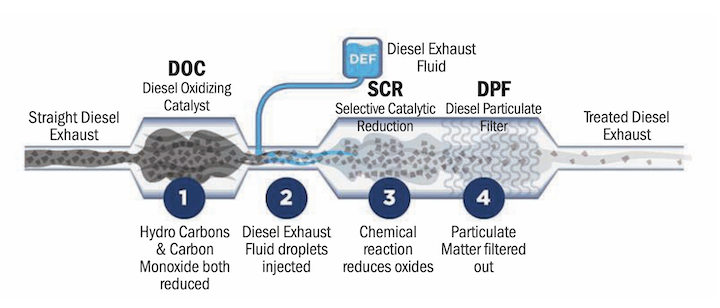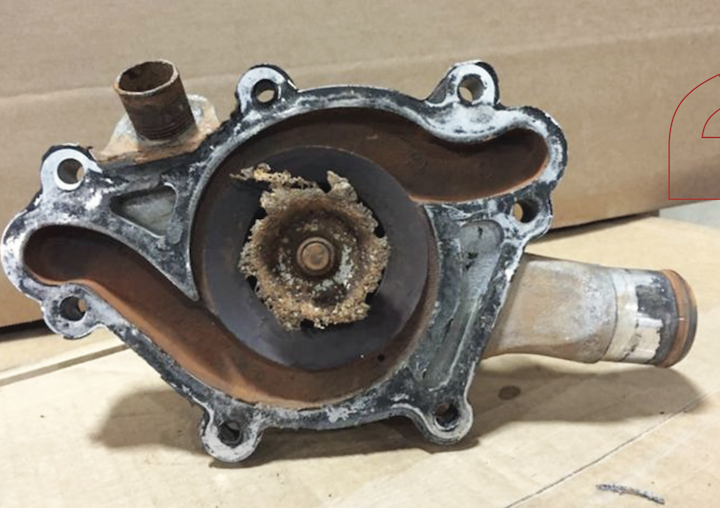
Many will say it’s not always about the price when it comes to dealing with your shop clients.
While that appears to be true, it’s still pretty important, according to the Jobber News 7th Annual Shop Survey.
Our survey of service and repair shop owners and technicians found that the most important thing they care about is part availability and inventory. And your customers need their parts now, not later.
We asked what factors come into play when ASPs decide to make you their first call jobber. Options included price/discount, location, brands, counterperson, relationship and online ordering capabilities. Respondents could choose more than one. Of the more than 100 people who took part in the survey, 93 per cent chose availability as being important. From there, it was a significant drop off to price at 70 per cent and relationship at 64 per cent to round out the top three.
“Availability of parts at a reasonable price and quick delivery is paramount to keeping the customer happy since that is what ensures repeat business,” said one respondent.
A good price doesn’t matter if service is terrible, a commenter explained. “Without timely, accurate service, price is irrelevant. Making things right when they go wrong is what building a good relationship with any supplier is all about.”
While everyone wants a deal on parts, and that was reflected throughout the survey, having trust in the jobber and a strong relationship was a common desire.
“Without timely, accurate service, price is irrelevant. Making things right when they go wrong is what building a good relationship with any supplier is all about.”
“I have to trust that the person I talk with understands exactly what I’m looking for,” one response read. “If I feel like they are looking out for my best business interests by finding what I want in a timely fashion, then I can be comfortable with asking for it.”
Dealing with the dealer
But when it comes to going outside the jobber network, dealers are playing a role in getting service and repair shops what they need. Though respondents don’t appear to buy a whole lot, they’re still finding benefits in going to dealers.
About 40 per cent said they buy upwards of 10 per cent of their products this way. Almost one-third see between 10 and 20 per cent of their purchases being made at dealerships. Another 16 per cent have upwards of 30 per cent of their purchases at dealers. Altogether, 89 per cent of shops are sending up to 30 per cent of their business outside of jobbers.
And 54 per cent of them said this hasn’t changed over the last year. Another 27.5 per cent say they’re buying more. Only 18 per cent said they’ve slowed down their purchases from dealers.
Why? Price is a factor that seems to keep most repair shops from shopping more at dealers. But quality and availability are two reasons that came up time and time again in the responses.
“Most pricing from dealers is ridiculously high,” one person said. “That being said, we do buy from dealer if part isn’t available outside or if the aftermarket parts don’t fit.”
Going online
Most shops either order a lot of parts online or very little to none. There doesn’t appear to be a much middle ground.
According to responses, more than half, 54 per cent, order at least 70 per cent of needed products online. But for 30 per cent, online ordering represents between nothing and 20 per cent of the business they do.
“Same challenges – bad descriptions, unrelated purchase options showing up in searches, unavailable part numbers showing up in searches.”
Broken down deeper, almost a quarter buy 90 per cent or more of their products online. On the flip side, online ordering represents less than 10 per cent of business for 14 per cent. A few even said absolutely nothing they order comes via the Internet.
For one person in particular, going online to get what they need is a valued time saver. So much so that they’ve increased their online parts ordering by 20 per cent.
“I am very satisfied. Time management is the big factor,” they said. “The counter staff also reviews and can usually see if a part for the job is missing and will follow up.”
One respondent seemed to have a recommendation for jobbers – a notification that alerts the user that the order has been picked up and is being completed.
“I have been burned a couple of times with my order sitting on the printer and nobody noticed. There is no confirmation that the jobber is actually putting the order together,” they wrote.
For those who said they were unsatisfied, inventory counts, cluttered search results and not-so-user-friendly encounters topped the list.
“Same challenges – bad descriptions, unrelated purchase options showing up in searches, unavailable part numbers showing up in searches,” one person said.
Advice
Jobber News asked repair shops how you as jobbers can make sure you are giving your customers everything they need.
“Have staff that know their products and are willing to go the extra step to get the sale,” one recommended.
“Quit wholesaling to the walk-ins.”
While many prefer to order online, there are still opportunities for jobbers to make the experience better.
“Make your website easier to navigate. Some jobbers have made their sites way too complicated to navigate through,” one said, adding that it’s often difficult to find the login page and that there are too many steps in place to find what is needed. “KISS – keep it simple, stupid.”
A few made sure to point out how much they didn’t like the fact that your average Joe walking in off the street could get the same price for parts as a loyal shop customer.
“Quit wholesaling to the walk-ins,” one said. “I would like to see wholesale parts available only to companies with a PST number.”
And don’t forget to drop in to see your customers.
“Set up a regular time each week to visit,” one wrote. “Sit down at least quarterly to see how things are going. If there is a problem discuss and deal with it. If there is something to learn, both sides will benefit.”
Read the full feature in the January/February 2017 issue of Jobber News













Leave a Reply